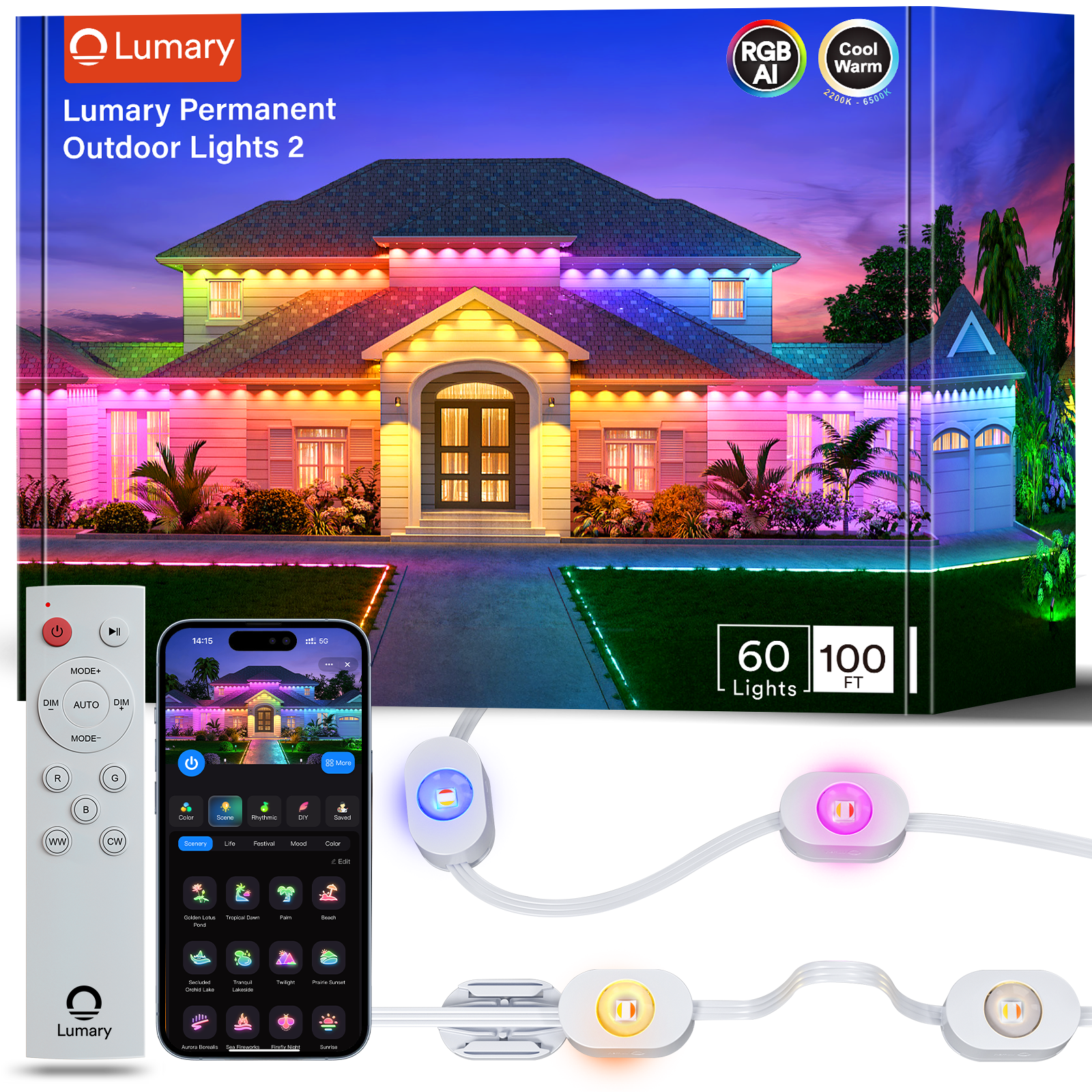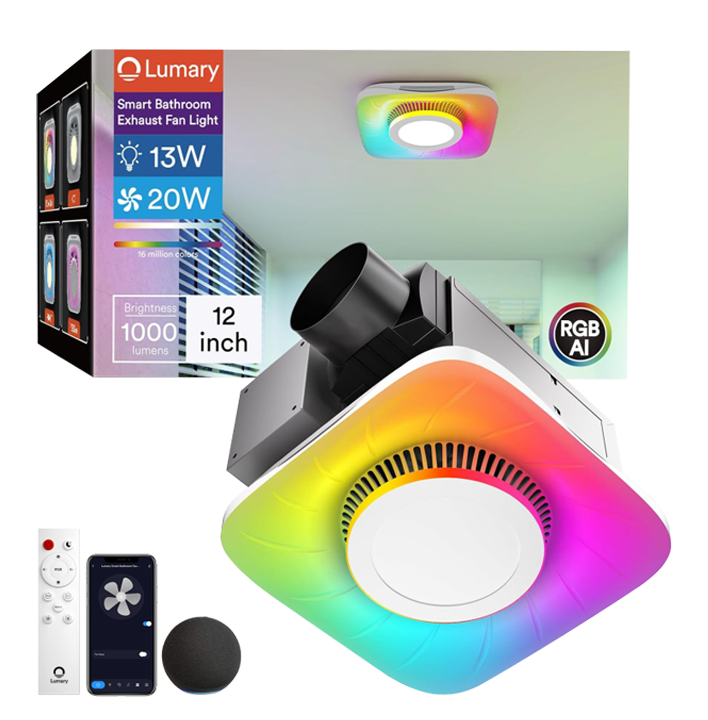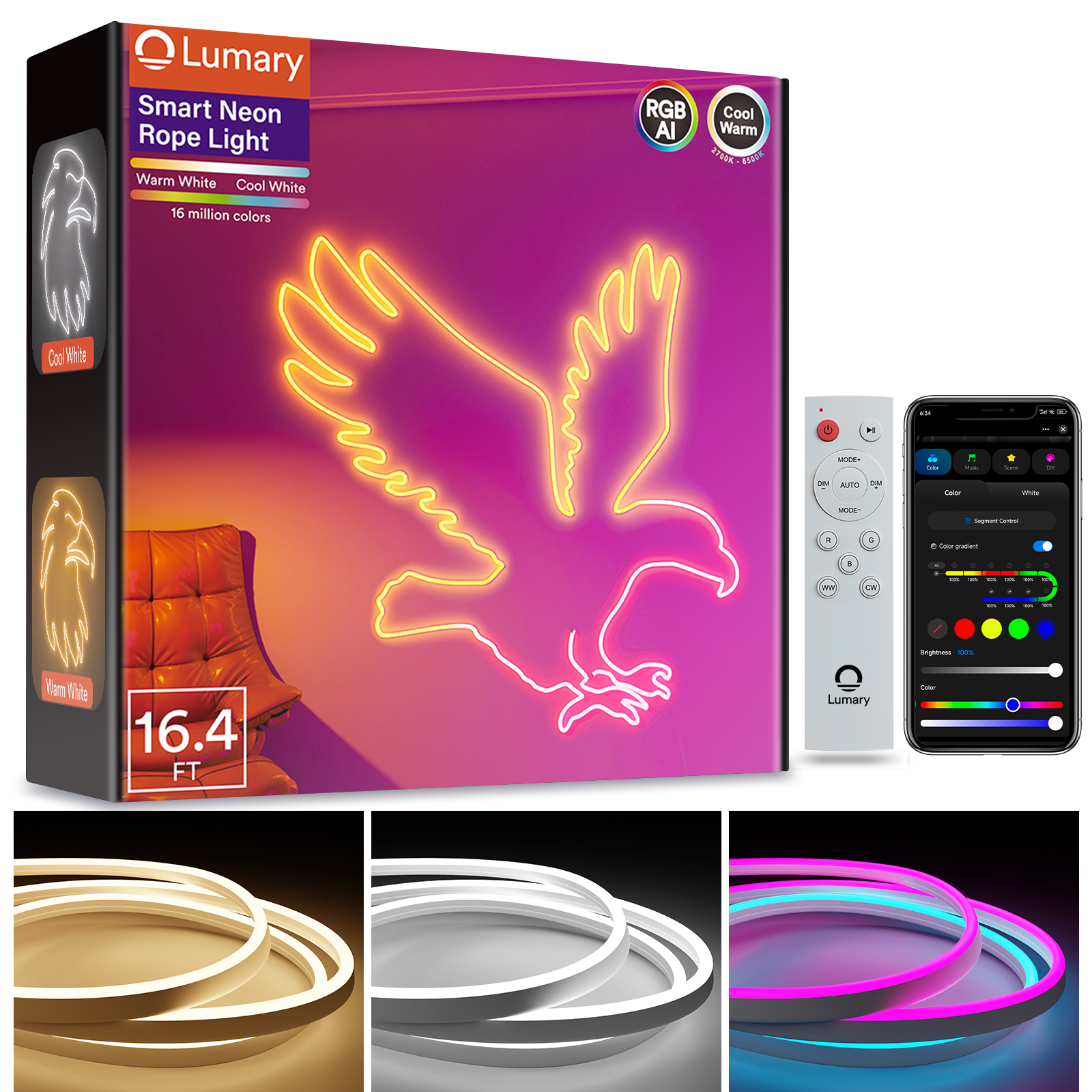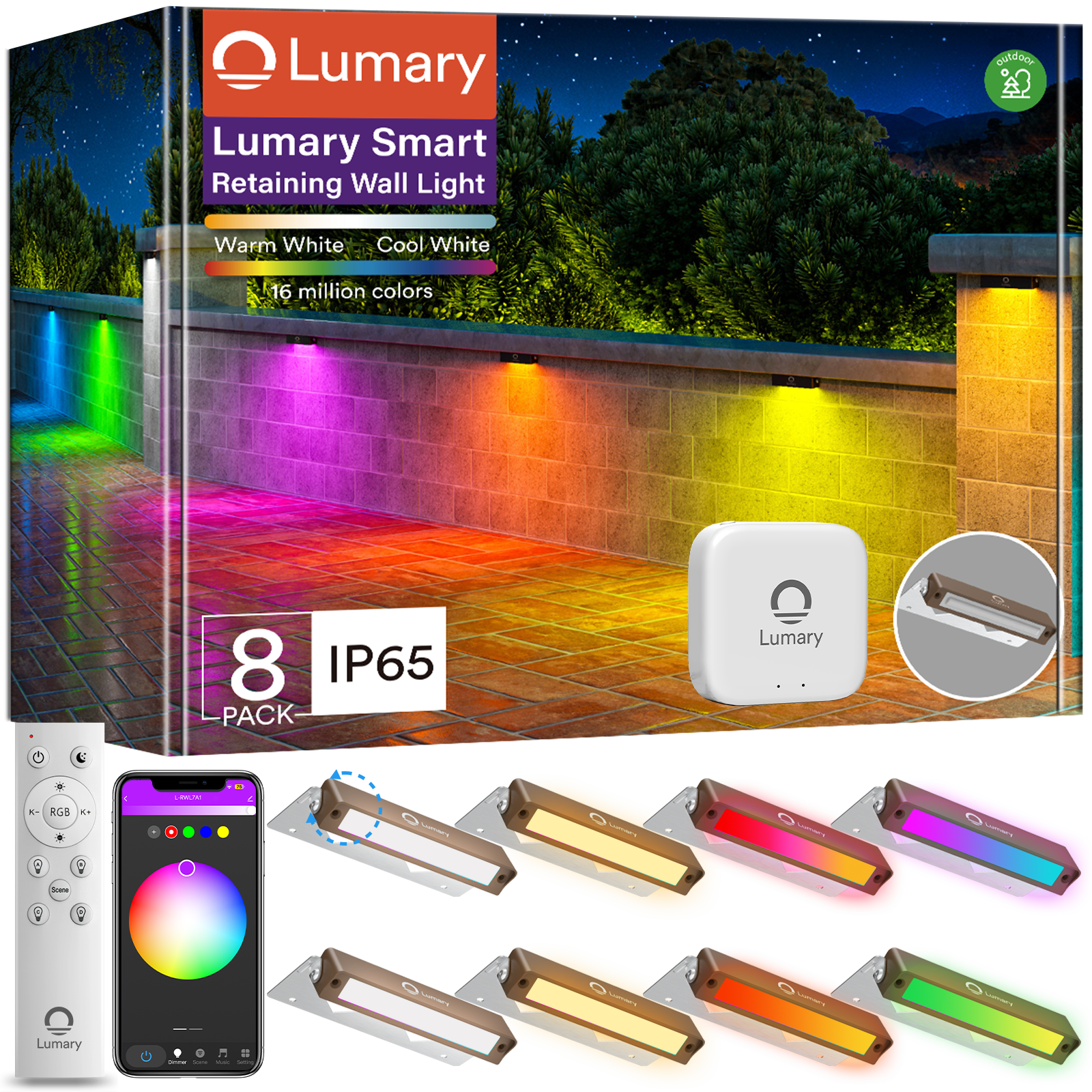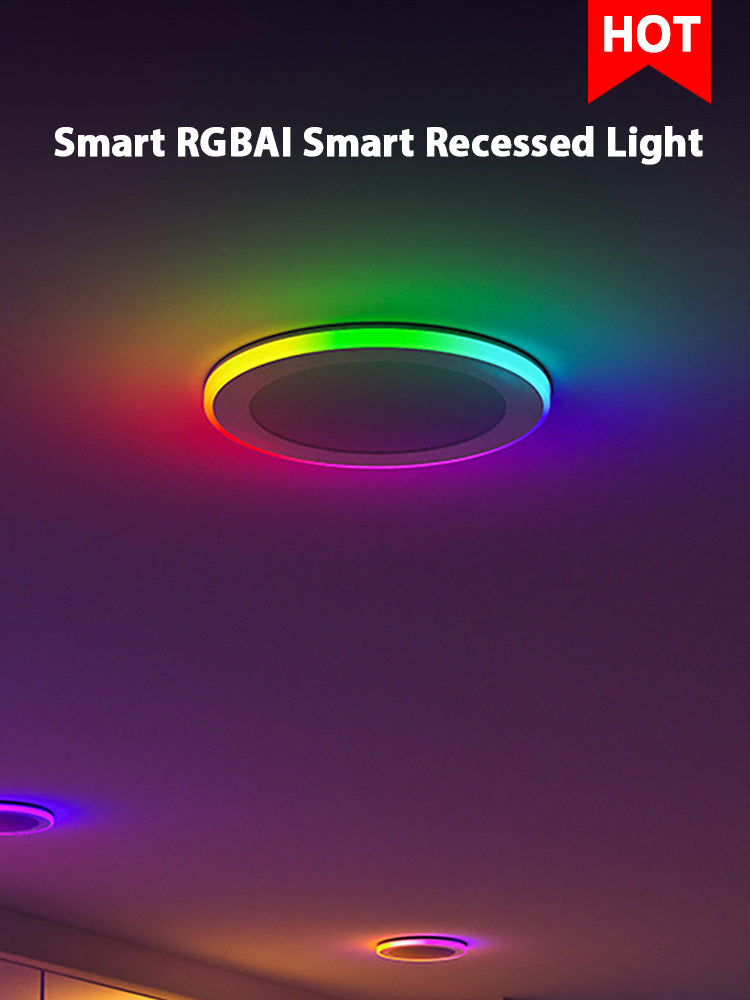You want to install led outdoor lighting without problems, right? Lumary Smart LED Outdoor Landscape Lights RGBAI are easy to use. These outdoor led lighting fixtures can handle water and do not rust. You can put them up without much trouble. You can use an app or your voice to control them. Make a plan first, read the instructions, and have bright and safe outdoor areas.
 Key Takeaways
Key Takeaways
-
Always put safety first by using GFCI outlets and turning off the power before you start. This helps lower the chance of getting shocked.
-
Pick outdoor LED lights with an IP65 rating for waterproofing and strength. This makes sure they can handle rain, snow, and wet air.
-
Plan your lighting layout well so you do not put too many lights in one spot and get even light everywhere. This makes your outdoor area safer and look better.
 Why Safe Outdoor LED Lighting Installation Matters
Why Safe Outdoor LED Lighting Installation Matters
Safety First
You want your outdoor LED lights to look nice and be safe. If you follow the right steps, you lower risks like electric shock or fire. Outdoor areas can get wet, so you need lights that work in rain and snow. Lumary Smart LED Outdoor Landscape Lights RGBAI have an IP65 waterproof rating. This means you can use them outside, even in wet places, without worrying about rust or damage. The aluminum housing stops corrosion, so your lights stay strong. You do not need an expert to put these lights up. Each pack has clips and screws. You can mount them under the eaves with simple tools. Always read the instructions and use a GFCI outlet for extra safety.
Tip: Make sure your power source matches what the lights need. Lumary lights use 120VAC and do not need a transformer.
Efficiency and Longevity
If you install your lights the right way, they last longer and work better. When you set up Lumary lights correctly, heat can escape. This keeps the lights cool and protects the LED parts. Good wiring stops voltage surges and drops, so your lights stay bright for years. Planning your setup helps you save energy and money.
-
Good heat dissipation keeps lights from getting too hot.
-
Best placement helps save energy.
You can control Lumary lights with an app or your voice. Set timers, change colors, and pick scene modes for any event. LED lights use less energy than old bulbs. You save money on your electricity bill and help the environment.
|
Lighting Type |
Energy Consumption |
Monthly Cost Savings |
|---|---|---|
|
Traditional Lighting |
High |
$80 |
|
LED Lighting |
Low |
$20 |
When you plan and install your outdoor LED lights the right way, you get safe, efficient, and long-lasting lighting for your home.
 Planning Your Outdoor LED Lighting Setup
Planning Your Outdoor LED Lighting Setup
Assessing Lighting Needs
You want your outdoor space to look great and feel safe. Start by thinking about where you need light. Do you want to brighten up your entryway, highlight your garden, or make your patio cozy for gatherings? You can use wall-mounted lights for entrances, post-mounted lights for driveways, and accent lights for garden features. Each area needs a different type of light. Soft, warm lights make patios relaxing. Brighter lights help you see better on walkways and driveways. Path lights keep you safe by showing where to step. Accent lights show off your favorite plants or decorations.
Here’s a simple way to plan:
-
Walk around your yard at night.
-
Write down spots that feel too dark or need extra attention.
-
Think about how you use each area—do you want security, style, or both?
-
Pick LED lights for energy savings and long life.
-
Choose strong materials like aluminum for fixtures, especially if you live near the coast or in humid places.
Tip: Lumary Smart LED Outdoor Landscape Lights RGBAI work well in all weather. They have an IP65 waterproof rating and anti-corrosion aluminum housing. You can use them in rainy, snowy, or coastal areas without worry.
Placement and Power Access
Now, decide where to put each light. Spread them out so every area gets enough coverage, but don’t overcrowd. Use a layout plan to avoid missing spots or making things too bright. Think about how seasonal changes might affect your lighting needs.
|
Factor |
Why It Matters |
|---|---|
|
Durability |
Handles moisture and lasts longer |
|
Functionality |
Matches your lighting goals |
|
Installation Process |
Easy for DIY, no need for a professional |
|
Size & Configuration |
Fits your yard’s layout |
Remember, Lumary lights need a 120VAC outlet. The cable from the adapter to the first spotlight is 17.5 ft and cannot be extended, so plan your power access carefully. You can control each light with the Lumary App or voice commands, making it easy to adjust settings for any occasion.
 Choosing and Preparing Outdoor LED Fixtures
Choosing and Preparing Outdoor LED Fixtures
Weatherproof and Durable Options
You want your outdoor lights to work all year. Pick products with an IP65 rating. This rating keeps lights safe from dust and water. Your lights will work in rain, sleet, or snow. Lumary Smart LED Outdoor Landscape Lights RGBAI have IP65 waterproof rating. Their aluminum housing stops rust. If you live near the coast or in humid places, these features help your lights last longer.
Here are some things to look for when choosing outdoor lighting:
-
Pick LED lights that can handle shock and vibrations.
-
Make sure your fixtures work in all kinds of weather.
-
Look for ratings like IP65, IP66, or IP67.
-
Think about motion sensors for more safety and saving energy.
Use clips and screws to install your lights. You only need simple tools. This makes it easy, even if you are new to DIY.
Compatibility and Control Features
Check if your outdoor lights match your power source. Lumary lights use 120VAC and do not need a transformer. You can control each light with the Lumary App, Alexa, Google Assistant, or SmartThings. You can change colors, brightness, and set timers with your phone or voice.
Here is a quick guide for compatibility:
|
Compatibility Factor |
Description |
|---|---|
|
Voltage Compatibility |
Make sure your outlet matches the LED fixture’s voltage (Lumary uses 120VAC). |
|
Current Rating |
Your power supply should meet the LED’s needs. |
|
Connector Types |
Check that your cables and connectors fit together. |
|
Compatibility with LED Types |
Pick controllers for built-in fixtures, bulbs, or strips. |
|
Smart Home Integration Requirements |
Use lights that work with apps and voice assistants for easy control. |
If you want to set scenes, timers, or music sync, Lumary lights make it easy. You get full control and fun lighting for any event.
 Installation Tips for Outdoor LED Lighting
Installation Tips for Outdoor LED Lighting
Getting your outdoor LED lighting set up the right way makes a big difference. You want your lights to last, stay safe, and keep your energy efficiency high. Let’s walk through some practical tips for a smooth installation.
Wiring and Connections
Wiring is the backbone of your lighting system. If you get this part right, you boost safety and reliability. Here are some steps and tips to help you:
-
Switch Off Power First
Always turn off the power at the breaker before you start any installation. This keeps you safe from electrical shocks. -
Use GFCI Outlets
Plug your Lumary Smart LED Outdoor Landscape Lights RGBAI into a GFCI outlet. This type of outlet protects you from electrical hazards, especially in wet areas.-
Install GFCI outlets or use GFCI-protected extension cords for outdoor connections.
-
Test your GFCI outlets regularly to make sure they work.
-
If your outlet isn’t GFCI, replace it or use a GFCI adapter.
-
-
Choose the Right Wiring Materials
Use weatherproof and grounded wiring. For underground runs, pick UF-B underground feeder cable. For above-ground, use conduit to protect wires from rain, snow, and sun. -
Plan Your Wiring Layout
Make a wiring plan if you have multiple fixtures. This helps distribute power evenly and avoids overloading your circuit.Method/Tip
Description
Use weatherproof and grounded wiring
Keeps your system safe and long-lasting.
Use conduit for above-ground wiring
Shields wires from weather and damage.
Use waterproof connectors and junction box
Stops moisture from getting into your connections.
Follow manufacturer’s instructions
Ensures you install your Lumary lights the right way.
-
Connect Wires Securely
Use waterproof wire connectors and junction boxes. This keeps out water and dirt. Always follow the Lumary instructions for connecting wires. If you hide wires along edges or under mulch, you get a clean look and protect them from damage. -
Test Your Installation
After wiring, turn the power back on and test your lights. Use a voltmeter to check that the voltage matches what your Lumary lights need. If a light doesn’t turn on, swap the bulb or check the connections.
Tip: If you ever feel unsure about wiring, you can consult a licensed technician. This helps you follow local codes and keeps your installation safe.
Mounting and Securing Fixtures
Now, let’s talk about mounting your fixtures and keeping everything neat. Good mounting helps your lights last longer and keeps your yard looking sharp.
-
Pick the Right Spot
Mount your Lumary lights under the eaves, along walkways, or in your garden beds. Make sure each fixture sits on a stable surface. This prevents wobbling or falling. -
Use Clips and Screws
Each Lumary light comes with clips and screws. You can use basic tools to attach them. No need for a professional—installation is simple and quick. -
Secure Cables with Staples and Clips
Use cable staples or clips to hold wires in place. For flat low-voltage cables, look for black staples that fit snugly and blend in with your deck or siding. Avoid using staples that are too small or too loose.-
3/16" single-nail staples may be too tight for some wires.
-
1/4" staples for coaxial cables might not grip flat wires well.
-
Black staples look better outdoors.
-
-
Hide and Protect Wires
Run wires along the edges of your house, behind plants, or under mulch. This keeps your yard tidy and protects cables from damage. -
Follow Manufacturer Instructions
Always read the Lumary manual before you start. The instructions show you how to connect wires, mount fixtures, and test voltage. This helps you avoid common mistakes like poor wiring or overloading circuits.
Note: Lumary Smart LED Outdoor Landscape Lights RGBAI are IP65 waterproof and built with anti-corrosion aluminum. You can use them in rain, snow, or even coastal areas. They are energy-efficient lights, so you save money and boost energy efficiency at home.
Common Mistakes to Avoid:
-
Don’t add too many lights to one circuit. This can cause flickering or dimming.
-
Don’t skip the wiring plan. Guesswork leads to uneven lighting and wasted energy.
-
Don’t use the wrong type of staples or clips. Loose wires can get damaged or cause tripping hazards.
By following these installation tips, you make sure your outdoor LED lighting is safe, secure, and ready to deliver great energy efficiency. You also get the most out of your Lumary lights, with easy app and voice control for any occasion.
 Adjusting and Testing Your Lighting
Adjusting and Testing Your Lighting
Angle and Coverage
You want your outdoor lights to shine where you need them, not in your eyes. Adjusting the angle helps you avoid glare and get the best coverage. Try these tips:
-
Pick angled fixtures that let you control the direction of light.
-
Tilt your Lumary Smart LED Outdoor Landscape Lights RGBAI downward. This keeps light out of your eyes and on your yard.
-
Place lights away from direct eye level. Aim them at walls, plants, or paths instead of straight at people.
-
Use fixtures with anti-reflective coatings or low glare ratings if possible.
If you want to cover more space, think about how high you mount your lights and where you put them. Here’s a quick guide:
|
Strategy |
Description |
|---|---|
|
Proper Placement |
Position lights to maximize coverage and reduce glare. |
|
Use of Reflective Surfaces |
Place lights near walls or fences to bounce light and brighten your space. |
|
Layout Consideration |
Plan your layout for the best use of each fixture. |
Taller posts give you wider coverage. Shorter posts focus light in smaller areas. Space your lights about as far apart as their height. For example, if your post is 10 feet tall, place the next one 10 feet away.
System Testing
Before you finish, test every part of your lighting system. Here’s what you should do:
-
Cut power at the breaker and check with a tester to make sure it’s off.
-
Look at all wiring for damage. Fix or replace anything that looks worn.
-
Use outdoor-rated boxes and seal gaps with silicone to keep out water.
-
Make sure every circuit has a ground wire and GFCI protection.
Turn the power back on and try all controls. Use the Lumary App to change colors, set timers, and test voice commands with Alexa or Google Assistant. Check each light to make sure it responds. If everything works, you’re ready to enjoy your new outdoor lighting!
Lighting Maintenance Tips for Outdoor LED Fixtures
Cleaning and Inspection
Clean outdoor lights to keep them bright and working longer. Do this at least two times each year. Always turn off the power before you clean. Use mild soap and water for most parts. Do not use strong chemicals on metal finishes. Dry every part before putting it back together. For glass, use gentle glass cleaner. Polish metal parts with the right products. Clean bulbs carefully, but do not touch the screw base.
Check wires often for damage or wear. Look for watermarks, dust, and worn cables. Regular checks make maintenance easy and prevent problems. Try to inspect your lights every three months. This helps you find issues early and stop bigger problems.
Tip: The Lumary App can remind you to clean and check your lights. You can turn off lights during cleaning and watch energy use.
Troubleshooting Common Issues
Outdoor LED lights can have problems sometimes. You might see flickering, burned-out bulbs, or lights that do not turn on. Check for loose wires or bad bulbs. Replace burned-out bulbs with the right kind. If you see water inside, check seals and make sure it is waterproof. Lumary Smart LED Outdoor Landscape Lights RGBAI have IP65 waterproof rating. They work in rain, snow, and dust. Their aluminum housing stops rust in humid or coastal places.
If your remote or app does not work, check batteries or reset the receiver. If lights get dim, check the power supply and make sure air can flow. Surge protectors help keep lights safe from power surges. Use the Lumary App to watch your lights, set timers, and change brightness.
|
Common Issue |
What You Can Do |
|---|---|
|
Flickering Lights |
Check connections, replace faulty bulbs |
|
Inspect seals, use waterproof fixtures |
|
|
Unresponsive Controls |
Replace batteries, reset receiver |
|
Brightness Drops |
Check power supply, improve ventilation |
These tips help you keep outdoor lights working well all year.
You can set up outdoor LED lighting easily if you do these things: First, turn off the power before you start. Next, use good materials for your lights. Plan where to put each light when it gets dark outside. Choose fixtures that can handle rain and snow. Clean your lights often and check them to make sure they work well. Always read the instructions from the company. You can use cool features like controlling lights with an app or your voice. This helps keep your lights safe and bright.
FAQ
Is Lumary Smart LED Outdoor Landscape Lights RGBAI waterproof?
Yes, you get IP65 waterproof protection. Your lights work in rain, snow, and dust. You can use them outside all year.
Can I use these lights in coastal or humid areas?
You can use Lumary lights near the coast or in humid places. The aluminum housing resists rust and corrosion. Your lights stay strong and bright.
How do I control Lumary lights with the app or voice?
-
Download the Lumary App.
-
Connect your lights to Wi-Fi.
-
Use Alexa, Google Assistant, or SmartThings for voice control.
-
Change colors, brightness, and set timers easily.

